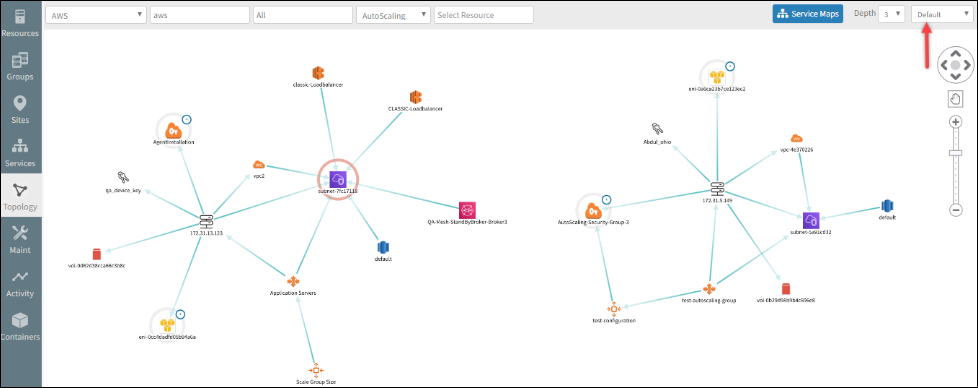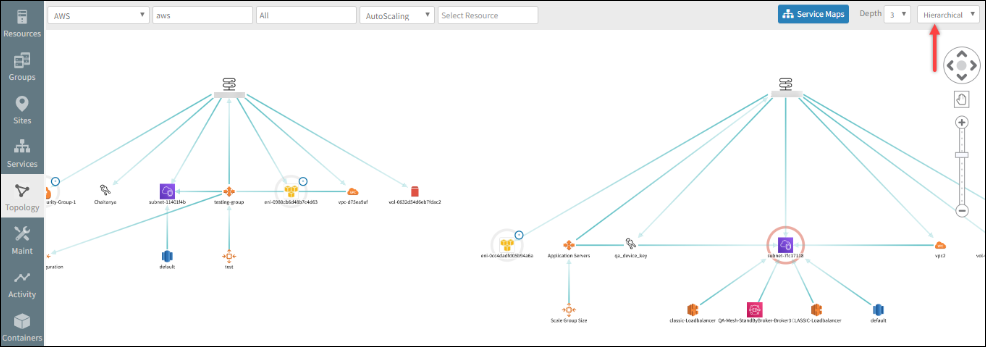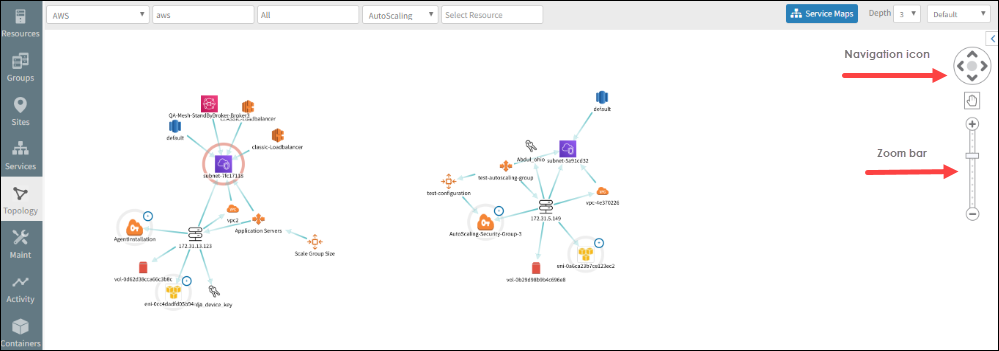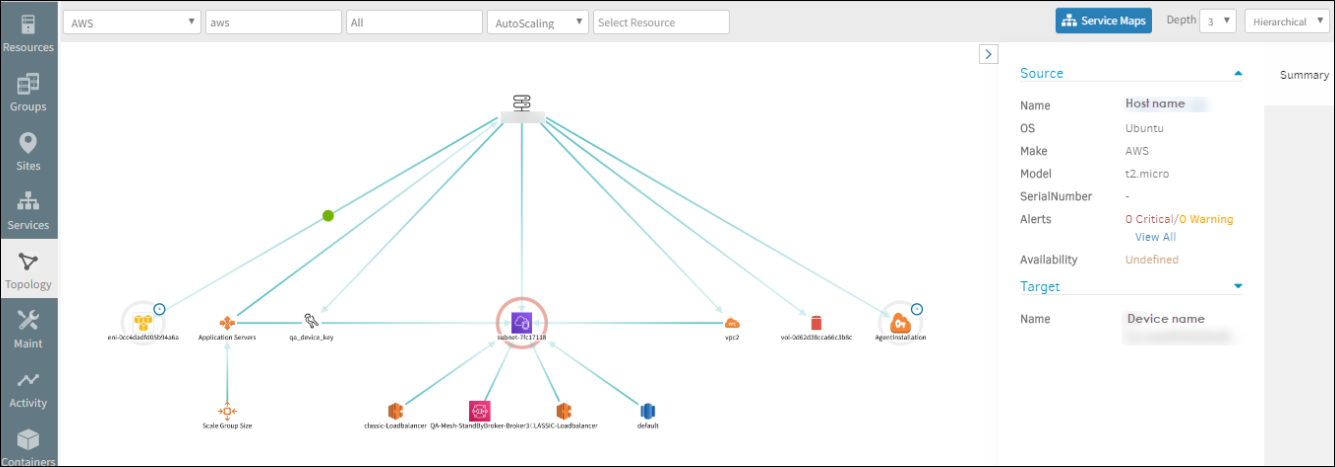Introduction
You can view your IT resources in the form of a Topology map. You can use the map to explore your existing configurations and quickly troubleshoot issues. The below image shows an example of topology that includes the nodes and connections. Clicking on any node or connection displays the attributes of that entity.
Filter
Filters can help you quickly search and focus on the specific resources, especially when you want to diagnose and troubleshoot issues. Use the filters to view specific resources in a certain site (region) or the resource type. The Topology explorer shows the filtered resources and its connected resources.
For example, you can select the resource type as AWS, select the region and select the AWS type as Auto Scaling, you can see the AWS instance and the Auto Scaling resources connected to it in that particular region.
Depth
Depth refers to the level of topology you want to view. When you have a large number of resources spread across multiple levels, displaying everything in a flat view is overwhelming. To address this issue, the Topology explorer allows you to select the level of topology you want to view. When you first view a Topology, all the base resources are shown as the top-level hierarchy that is Depth 1. Similarly, you can view the levels up to Depth 5.
Topology layout
Layout refers to the arrangement of resources. You can view the Topology in two variants:
- Default view
- Hierarchial view
Default view
Default view provides a radial, or hub and spoke view into the connected resources. This visualization option is preferred for vertices and edges that may not express a direct parent-child hierarchy, or strict dependency relationship.

Default view
Hierarchical view
The hierarchical view presents a top-down or parent-child view into the mapped resources. This visualization option works best for scenarios where there might be a strict dependency structure, such as a switch with its connected hosts or a router and its connected endpoints.

Hierarchcial view
Zooming in or out
The ability to zoom in and zoom out of a map allows specific nodes or multiple nodes to be viewed at once in a network.
For example, if you have a huge topology and want to zoom in, click the + icon on the zoom bar to get a more clear picture of certain resources.
Usage Notes
- When a map is viewed at a low zoom level, the icons are displayed at a reduced size, the edges are thinner and the label names appear hidden. Labels are displayed when the reduced size of the node is clicked.
- When a map is viewed at a high zoom level, the icons are displayed at a bigger size, the edges are thicker and label names are displayed.
- When a map is viewed at a default zoom level, the icons are displayed at a normal size, the edges are thicker and label names are displayed.
Navigating through topology explorer
The vertical and horizontal navigation arrows scroll up and down on the explorer.
For example, if you have a huge topology spread across multiple levels and you want to scroll down to view the bottom level resources, click the lower navigation arrow to scroll down.

Navigating through Topology Explorer
Viewing host and target resources
The host and target resource are connected with a line referred as edge. When the line is clicked, a green dot appears indicating that the edge was selected.
The details of the source and target resources appear on the Summary pane.
- Source: Refers to the host resource.
- Target: Refers to the dependent resource that is communicating with the host resource.
